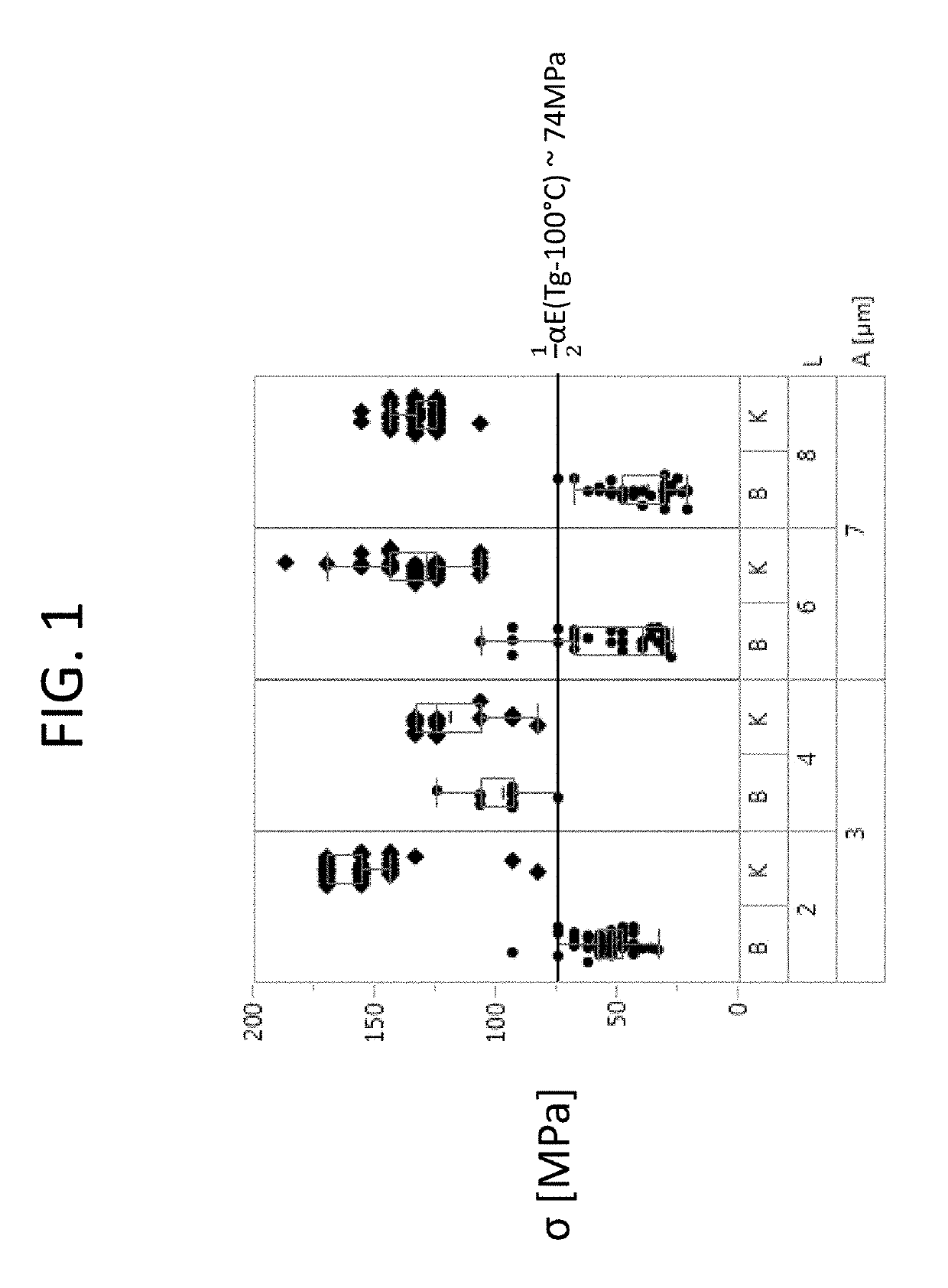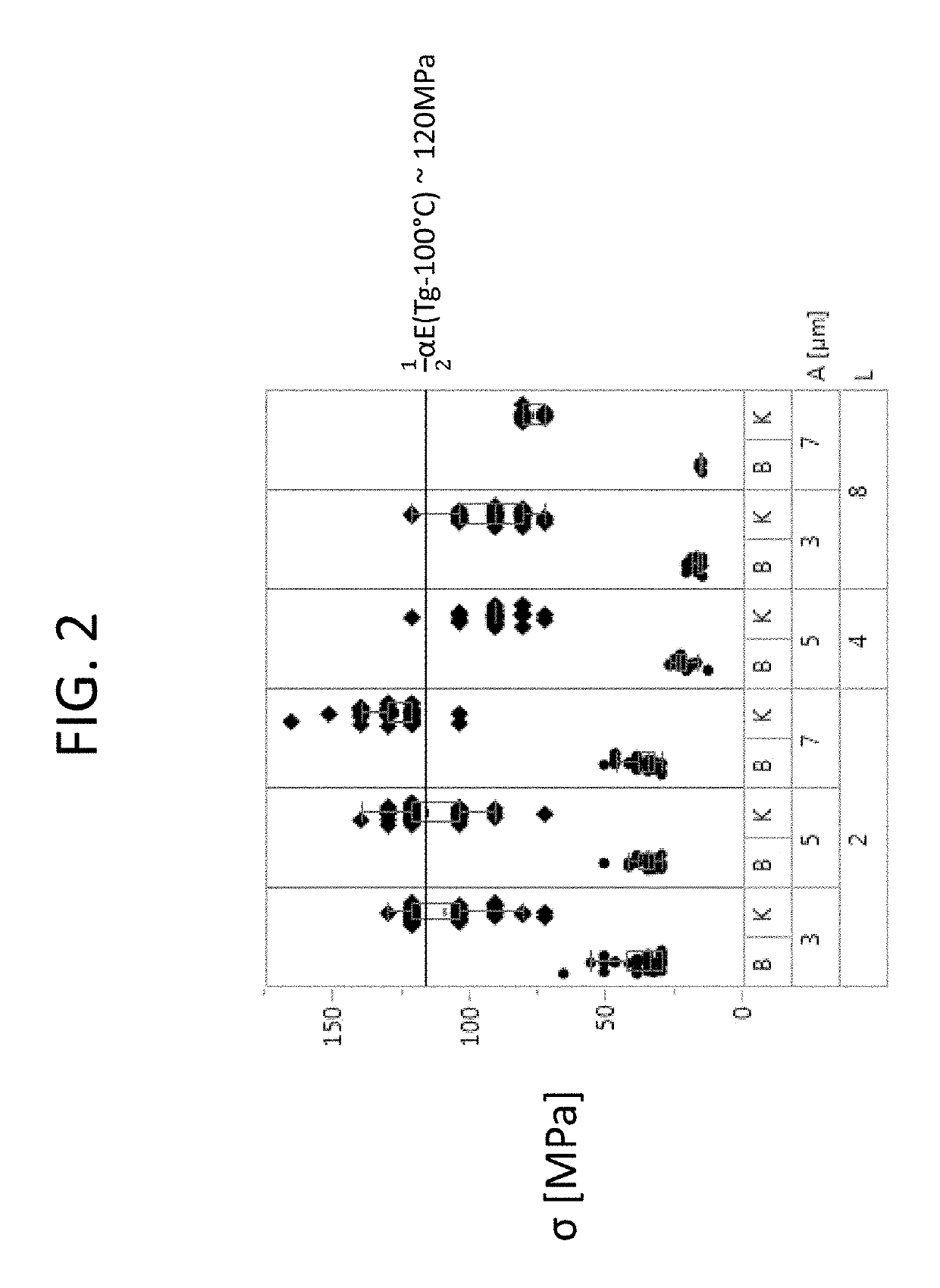Method for separating substrates
a substrate and laser-assisted technology, applied in the direction of glass making apparatus, manufacturing tools, welding/soldering/cutting articles, etc., can solve the problems of complex post-processing, insufficient quality of edges, and low cost efficiency, so as to reduce the power of lasers and reduce the use of lasers. , the effect of high edge quality and high and defined edge quality
- Summary
- Abstract
- Description
- Claims
- Application Information
AI Technical Summary
Benefits of technology
Problems solved by technology
Method used
Image
Examples
Embodiment Construction
[0124]Referring to FIGS. 1 to 3, the results of a DOE series of tests are shown for three different glasses, namely SCHOTT AF32® (FIG. 1), SCHOTT D263® (FIG. 2), and SCHOTT BOROFLOAT® 33 (FIG. 3).
[0125]This represents a selection of examples. More generally, the invention can be used for various substrates, in particular made of glass, glass ceramics, and / or silicon with filamentation, in particular even for materials having a low coefficient of thermal expansion.
[0126]Filamentation was performed for each of a plurality of samples of these glasses, i.e. spaced apart defects were introduced into the volume of the respective sample along a separation line by laser pulses of a laser.
[0127]For the samples made of SCHOTT AF32® or SCHOTT D263®, substrate thicknesses of approximately 100 μm were in particular selected, and for the samples made of SCHOTT BOROFLOAT® 33, substrate thicknesses of approximately 1 mm were in particular selected.
[0128]After filamentation, the breaking strength σB...
PUM
| Property | Measurement | Unit |
|---|---|---|
| Temperature | aaaaa | aaaaa |
| Temperature | aaaaa | aaaaa |
| Temperature | aaaaa | aaaaa |
Abstract
Description
Claims
Application Information
 Login to View More
Login to View More - R&D
- Intellectual Property
- Life Sciences
- Materials
- Tech Scout
- Unparalleled Data Quality
- Higher Quality Content
- 60% Fewer Hallucinations
Browse by: Latest US Patents, China's latest patents, Technical Efficacy Thesaurus, Application Domain, Technology Topic, Popular Technical Reports.
© 2025 PatSnap. All rights reserved.Legal|Privacy policy|Modern Slavery Act Transparency Statement|Sitemap|About US| Contact US: help@patsnap.com



